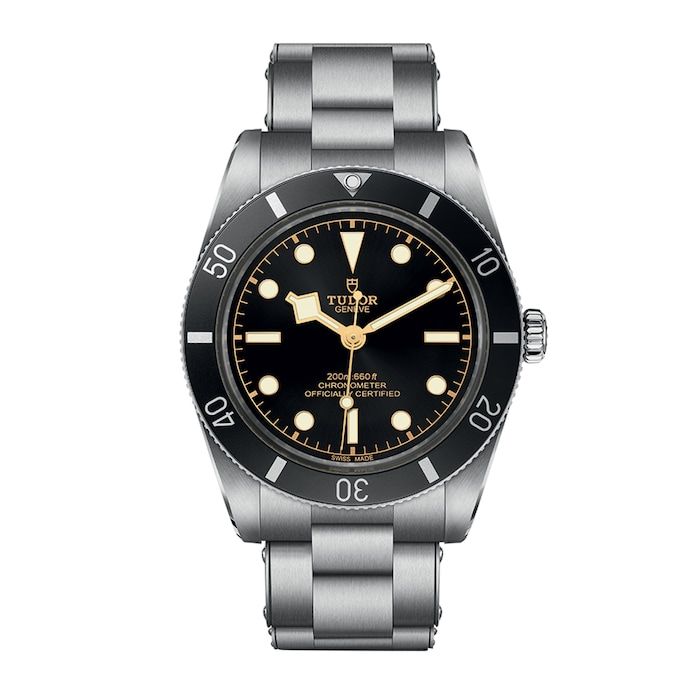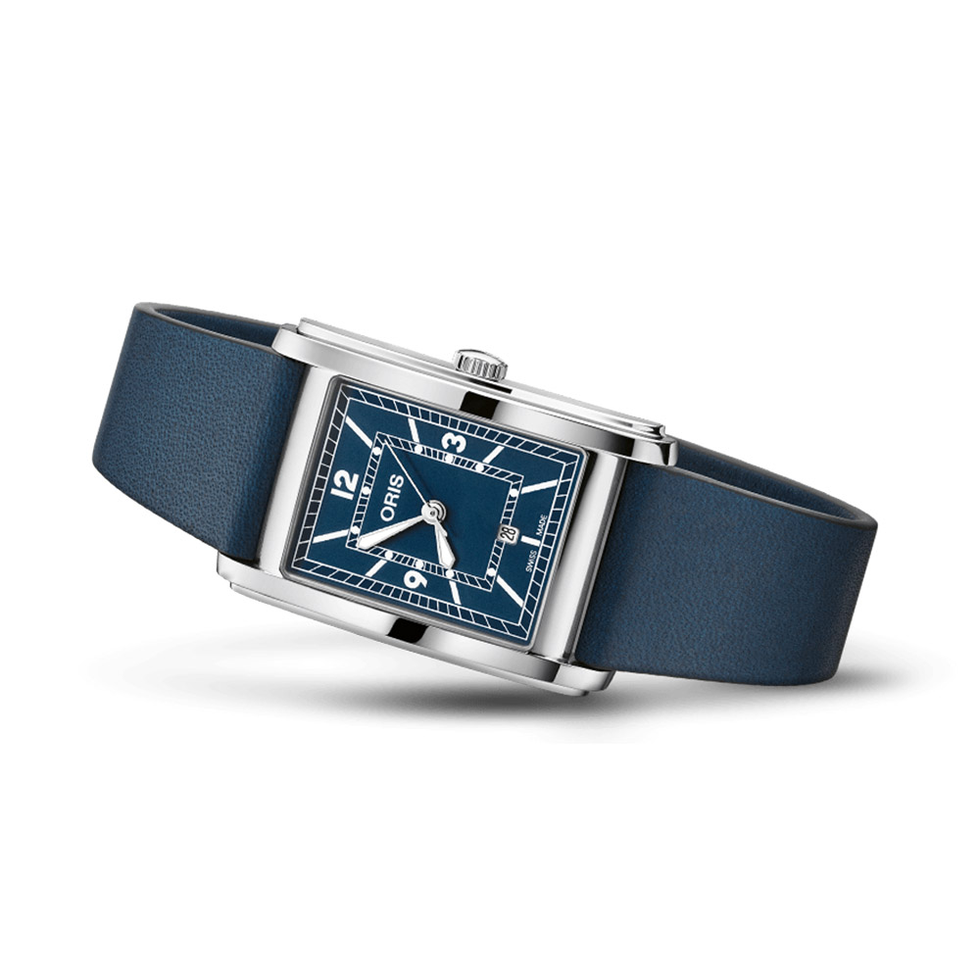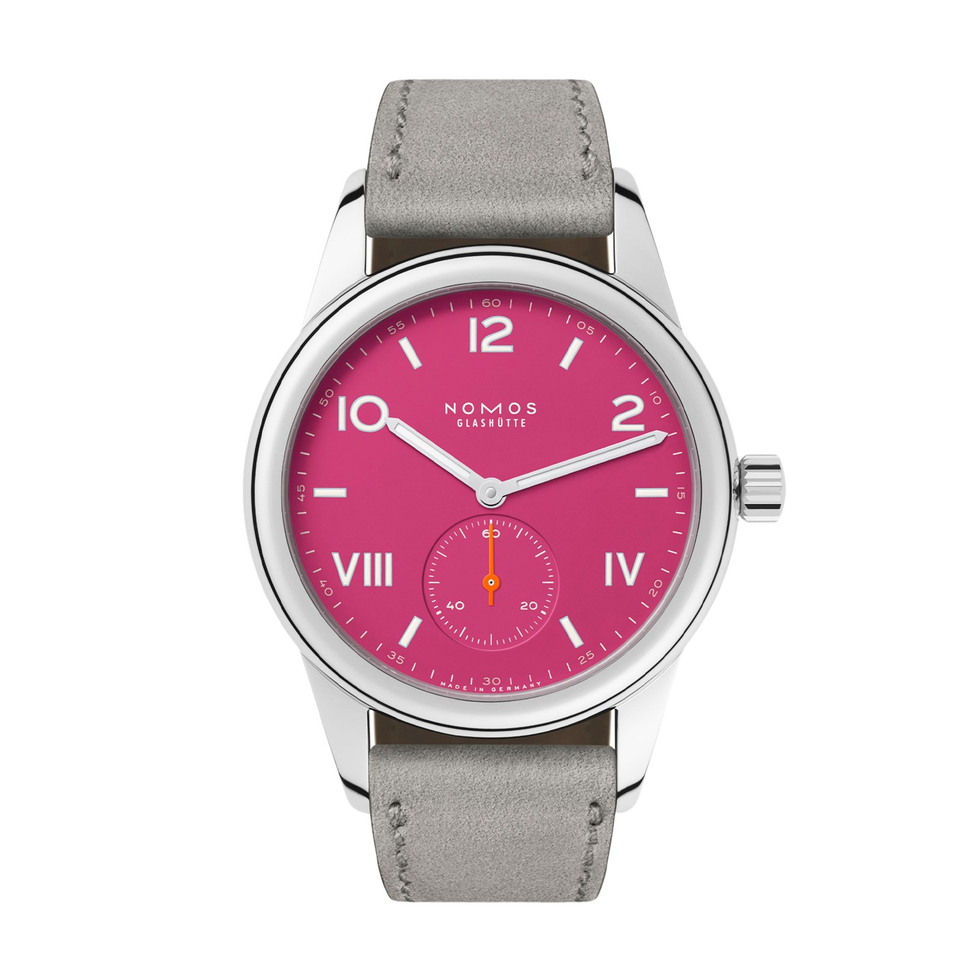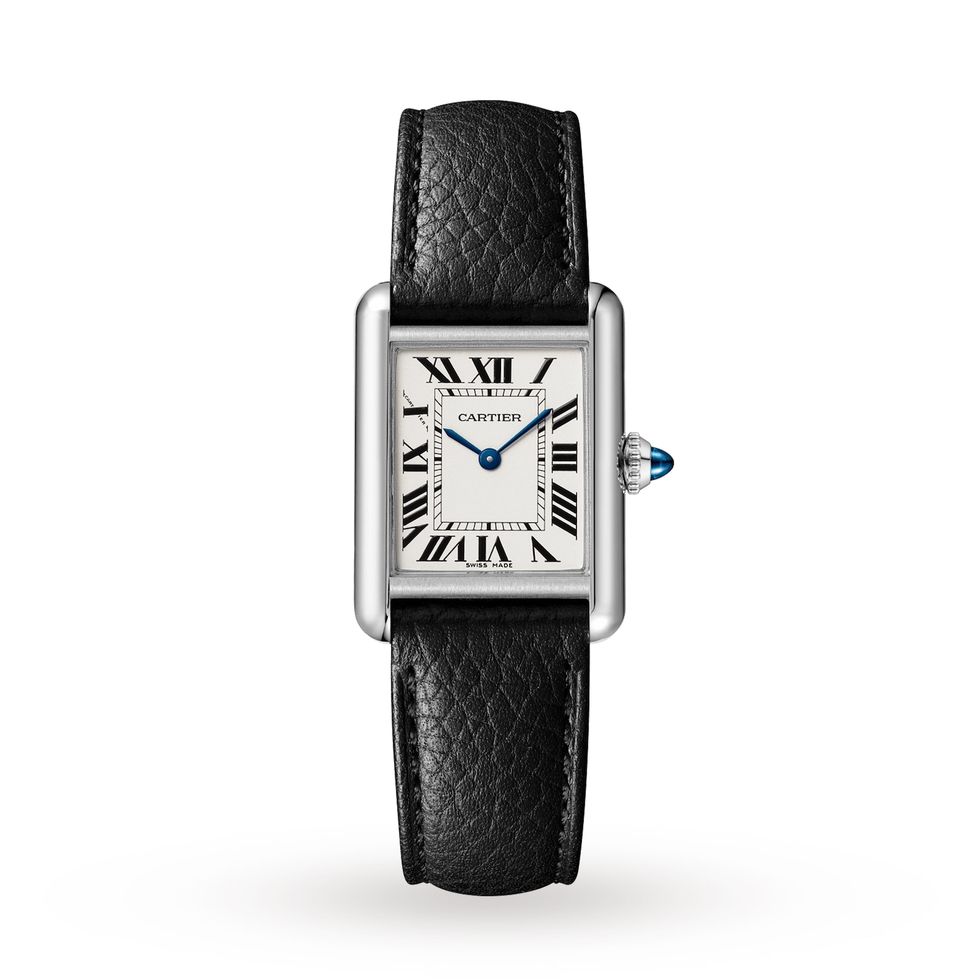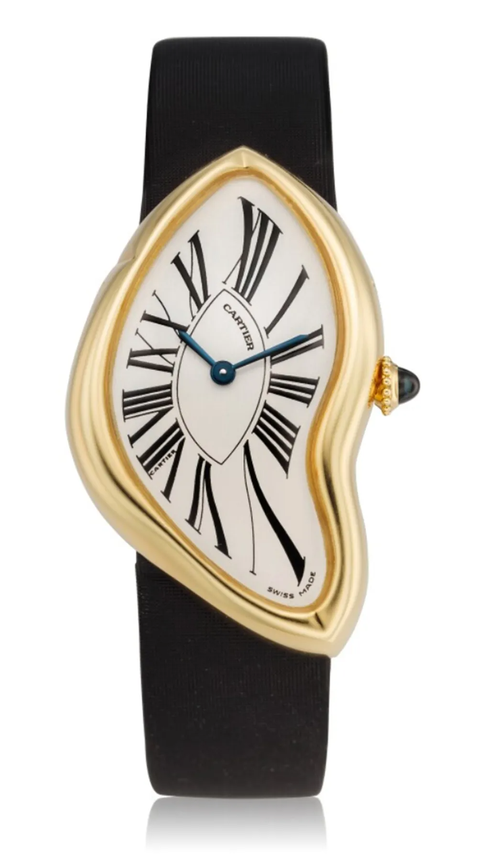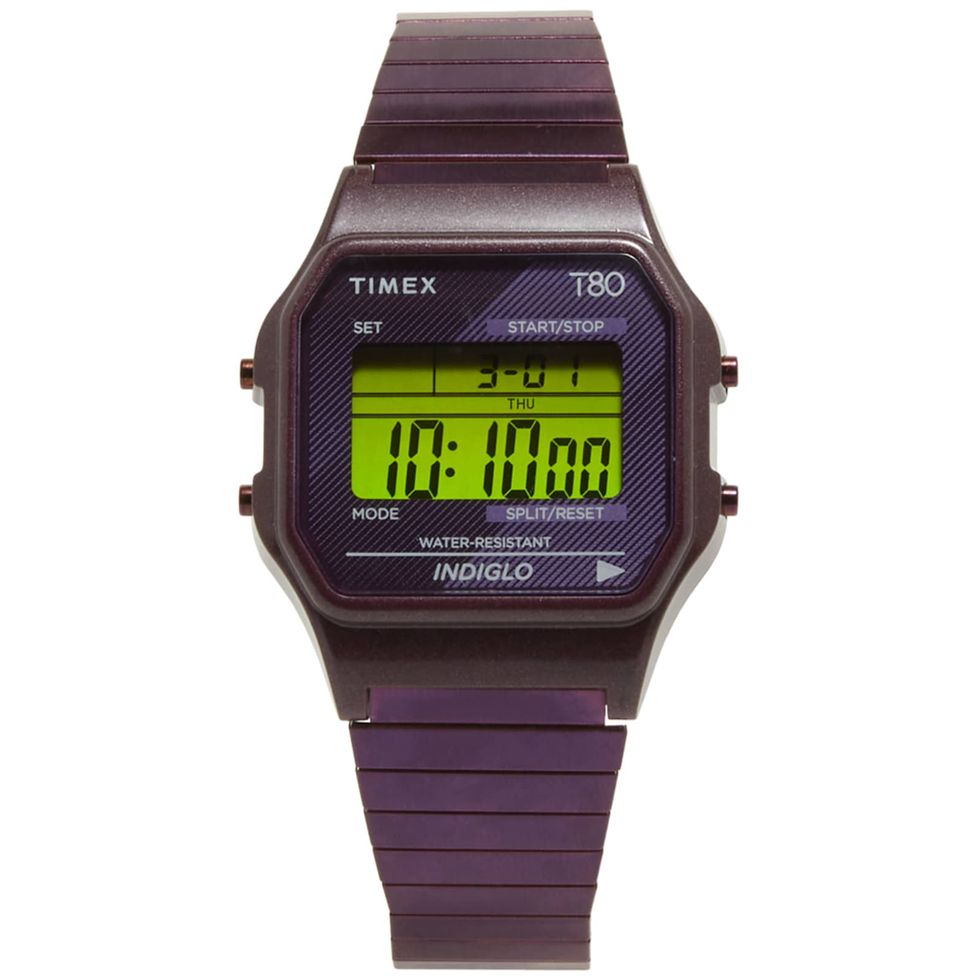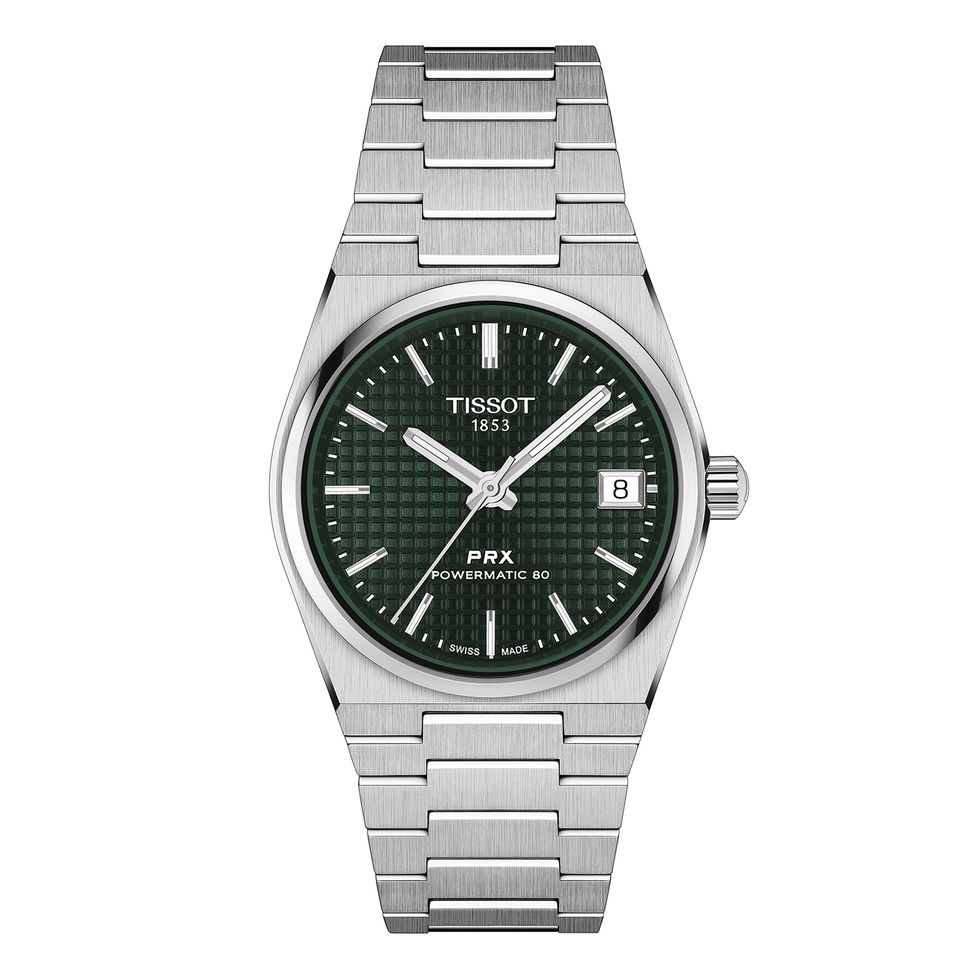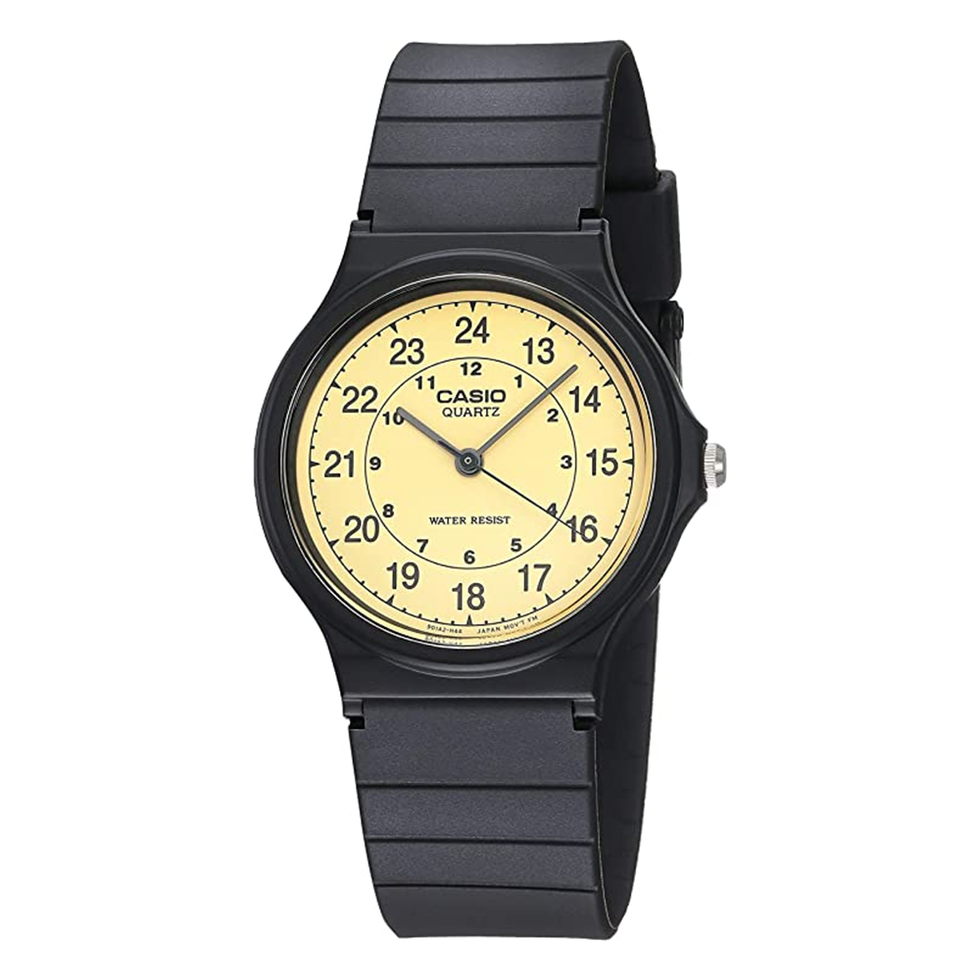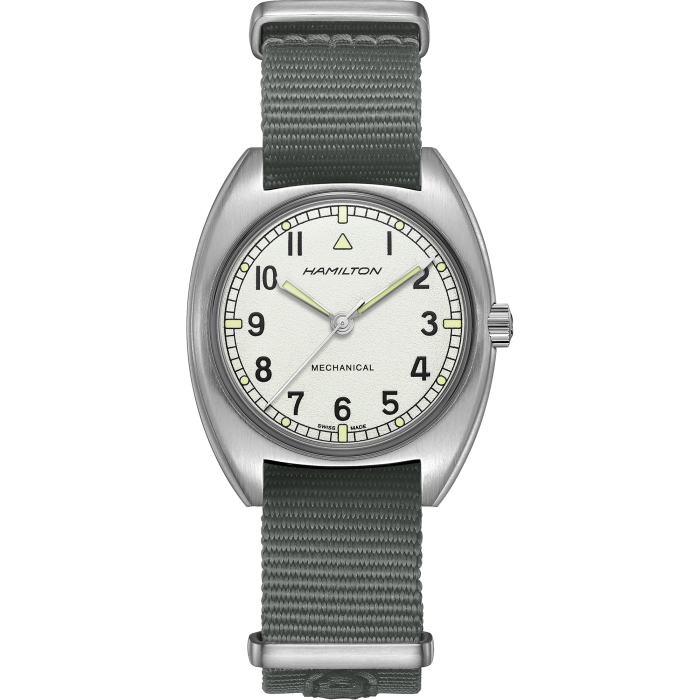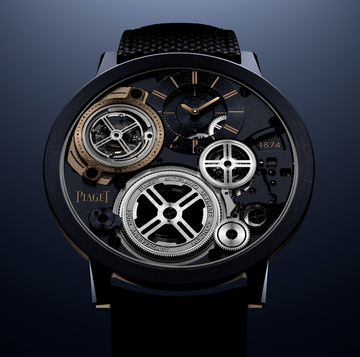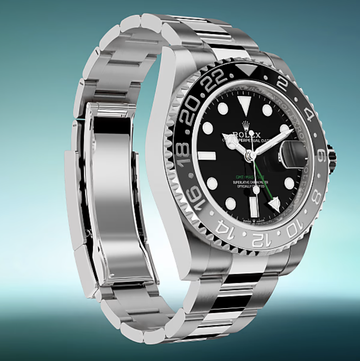According to a recent report from consulting firm Deloitte, sales of vintage watches are likely to increase by 75 per cent in the next six years. Currently, the market generates around $20 million in sales, but that is set to increase to $35 million by 2030, and the swell is being driven by Millennial and Gen-Z buyers, apparently. They buy vintage for a number of reasons: firstly, they’re generally much cheaper, and secondly, you can actually purchase them. Meaning you don’t need to join a waiting list, prove your financial viability to the brand, or promise your left kidney as a show of faith. It’s also because vintage watches, on the whole, are smaller. And right now, we love small watches.
In Esquire’s recent annual Watch Report, only two of the year’s 22 best watches were below 38mm in diameter, and most were over 41mm. Every 2mm increase in diameter equates to around 10% more surface area taken up on the wrist. So a millimetre here or there might not seem like much, but it all adds up.
Wrist watches have gradually increased in size over the past century or so. Audemars Piguet’s steel sports watch, the Royal Oak, for example, debuted in 1972 at 39mm, but the ‘standard’ Royal Oak today is 2mm wider. In 1993, AP introduced the Royal Oak Offshore, a 42mm wide, 16mm deep chronograph, which was subsequently nicknamed ‘The Beast’ for its hefty size and weight. Today, the Offshore range tops out at 44mm.
There are similar case studies elsewhere. Both Rolex’s Submariner and Omega’s Speedmaster have grown by 4mm since they were first released in the mid-century. And the likes of Hublot and Richard Mille have built empires on the broad backs of oversized watches.
So, if watchmakers and watch-wearers of near-history have generally erred on the large, why are we now skewing in the opposite direction?
Well, it might be because amongst the stylish young, there has been a shift in the very perception of watches, from a marker of wealth, status and masculinity, to a marker of taste. That’s not to say that larger watches can’t be cool or stylish, but modern fashion is a matter of subversive bricolage, and proving that something once mutually agreed to be uncool or uninteresting, can in fact be the opposite. Case in point: Tyler, The Creator’s historic choice of a humble Casio, currently available for £17.50 on the watchmaker’s website, with a 33.8mm dial.
He is, objectively, one of the coolest people on the planet, and though he recognises that a watch can somewhat 'complete' a look, he opted for the least amount of watch possible, and that’s the point. Most watches just say ‘wealth’. That Casio said ‘choice’.
But the small watch trend isn’t just about price, necessarily. Cartier’s Crash, for example – which TTC promptly graduated to – has become something of a grail, despite the chances of you finding one beneath £200k being slim to none. (You could try for a Cartier Pebble instead, which seems to be Tyler's new squeeze, anyway.)
Expensive doesn’t equal cool (not in the purest sense; a Gucci bag isn’t cool just because it’s £3000), so perhaps it’s the sheer impossibility of the Crash that makes it so desirable. That, or the fact that it is one of the most beautiful, perfectly proportioned things ever made.
Traditionally, the Crash would be considered a watch for women, but as more and more women have taken to wearing men’s watches, and vice-versa, the watchmakers have recognised the need for more intermediate sizing. In the main, women’s watches are just smaller, bejewelled versions of the men’s pieces - the proverbial ‘pinking and shrinking’. But when all the new watches for the year were unveiled in the Spring, it became clear that many makers had catered to the in-between. Vacheron Constantin’s charming 34.5mm Overseas, for example. Or Tudor’s Black Bay 54, which stunned the critics with its slight, 37mm case.
Perhaps the reason young people are wearing smaller watches is because smaller watches are just better. Lighter, more comfortable, less likely to snag on your sleeve etc. They go with more stuff, too – a little Timex or Swatch looks better with a suit than a giant dive watch, for example. And there’s no drop in performance, because they tell the time just the same.
And for those insecure few fretting over the notion that a small watch doesn't convey status, then worry not. We live in the age of quiet luxury, and nothing whispers money like a tiny timepiece.

